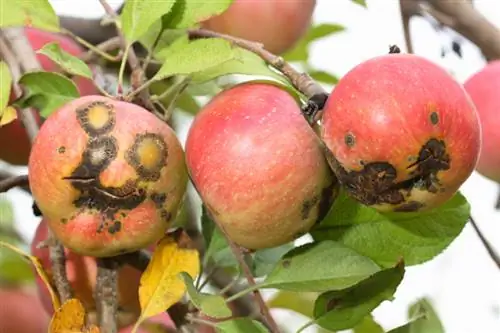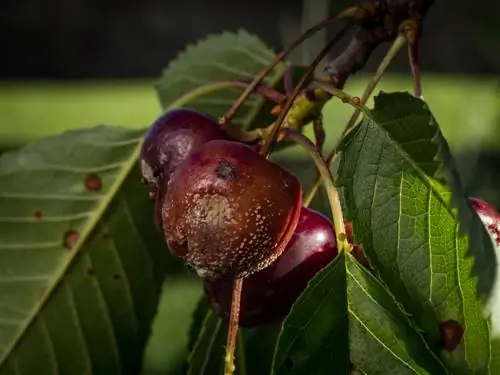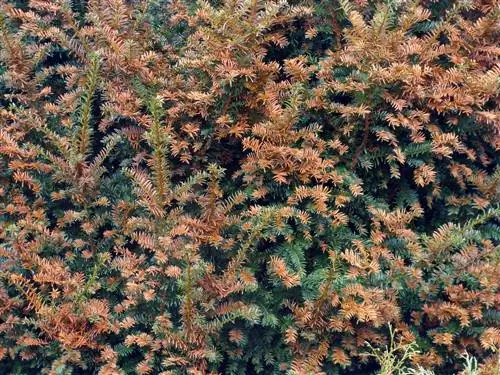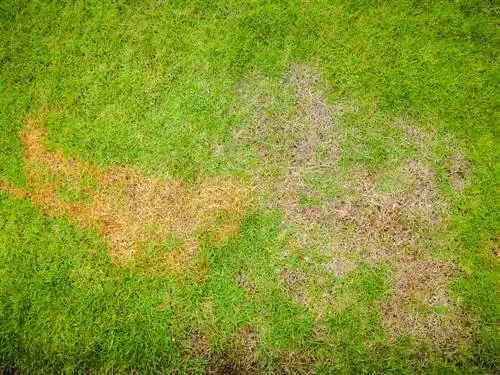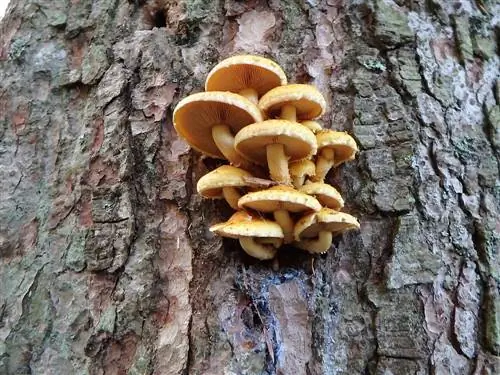- Author admin [email protected].
- Public 2023-12-16 16:46.
- Last modified 2025-01-23 11:19.
Even with regular care, fungal infestation can sometimes occur on the apple tree in your own garden. Last but not least, this can be prevented with regular pruning, which ensures a light tree crown.
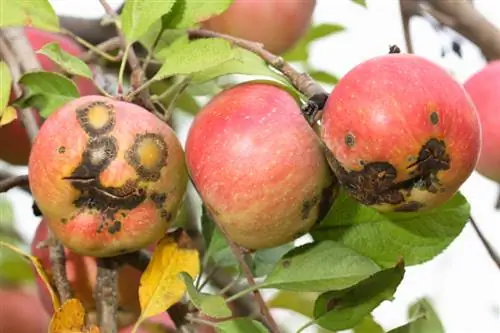
How can you prevent fungal infections on apple trees?
To prevent fungal infection on apple trees, you should ensure good ventilation, plant resistant varieties, prune regularly and care for your trees well. This will avoid excess moisture and promote the vitality of the tree.
Basics for the spread of fungal diseases
In order to be able to take targeted action against the initial infection and spread of fungal diseases, you must understand the prerequisites for an infestation. One of the most important fungal diseases affecting apple trees is so-called apple scab. This can be recognized by the following features:
- small, brown spots on young leaves
- rapid spread of brown spots
- dark spots with cracks on the fruits
- shrinking fruits in winter storage
The fungus requires heat and moisture on the leaf and fruit surfaces to spread. While the temperature is difficult to influence, the humidity can be controlled specifically.
Make sure there is good ventilation when planting
Apple trunk shapes that are too low should not be planted, especially in gardens that are surrounded by high hedges and tend to be in the shade. Apple trees with half trunks or standard trunks protrude beyond the lee of hedges and are therefore more easily dried by the wind after rainy days. Regular pruning in spring and summer is also helpful as it ensures that the tree crown is flooded with light.
Select or graft resistant varieties
Not every apple tree is equally affected by diseases such as apple scab. Old and resistant varieties in particular often have surprisingly good resistance to this fungal disease. In conjunction with regular care, the use of chemical sprays can usually be avoided entirely. The particularly fungus-resistant varieties include:
- Pinova
- Florina
- Boskoop
- Kaiser Wilhelm
- Jakob Fischer
- Ontario
If you have an old apple tree in your garden, you can cut it back heavily and graft branches from one of these resistant varieties onto the old rootstock.
Tips & Tricks
All measures that promote the vitality of the apple tree also provide a certain degree of protection against fungal infestation. Initial infection with fungal diseases usually occurs not only due to tree crowns that are too dense and too high a level of moisture, but also due to poorly fertilized trees and trees that are not cut regularly.

